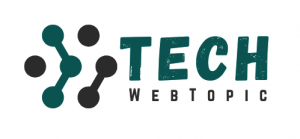Data annotation is also known as feature engineering. It involves building features for each class in the dataset using various techniques like bagging, boosting and regularization, etc. Labeling data helps in reducing the number of features that your algorithm needs to learn. There are multiple approaches to building a set of features for each class, and these approaches are also known as feature engineering techniques. Training data is labeled data used to teach AI models. Labeled data is also called test data used to test an AI model. You should implement human-powered data annotation services to get high-quality training data for AI-oriented projects. Here we will discuss various types of data annotation.
1. Image Annotation
Image annotation is the task of annotating an image with label information. AI training data ensures that a machine learning algorithm can learn the labels from an image. It is also known as image labeling, image tagging, and image feature engineering. Image annotation is a time-consuming task, and it requires a lot of manual work. It involves creating bounding boxes and segmentation masks for each class in the image. You can also annotate the image using tools and libraries provided by the machine learning algorithms. Image annotation is often used to create training datasets for the learning algorithms. Those datasets are then used to build AI-enabled systems like self-driving cars, skin cancer detection tools, etc. There are different image annotation methods, including the Bounding box method, Co-occurrence method, and Local binary patterns (LBP) method.
2. Video Annotation
Video annotation is the task of labeling sections or clips in the video to classify, detect or identify desired objects frame by frame. Video annotation can be done online using video annotation tools or offline using video editing software. It is possible to annotate the entire video or certain sections of the video depending upon the task at hand. Video annotation also uses techniques like bounding boxes or semantic segmentation. Computer vision tasks such as localization and object tracking cannot be performed online as the entire video must be labeled. Video labeling can also be done offline by first creating a list of objects of interest and then marking the video segments containing these objects. You can teach your model to understand video inputs, detect objects, and decide what objects are present in the video.
3. Audio Annotation
Audio annotation labels sections or audio clips in the audio to classify, detect or identify desired objects. To do this, an algorithm is required to detect features in the audio and then extract features from the audio. Some of the most popular techniques used for audio annotation include voice activity detection (VAD), acoustic modeling, etc. The process of detecting features in an audio file is known as feature extraction, and it also uses techniques like FFT, etc. After feature extraction has been done, there are various ways to label audios depending upon the task at hand. It is possible to label entire audio or certain parts of an audio depending on the task. Interfaces that process audio with data collected as utterances, time-stamped, and categorized across more than 180 languages and dialects are known as speech-to-text engines. These interfaces are used to generate human-readable text from speech. When a speech-to-text engine is used, the audio file containing the utterances is first analyzed, and then the audio clips containing the desired objects are labeled. Speech recognition is a task that needs to be done before the text can be generated.
4. Sensor Annotation
The sensor is a device that measures the data. It captures the data from sensors like thermometers, pressure sensors, etc. Annotating data coming directly from sensors involves some additional work. For example, if you have a thermometer and want to know the temperature of a room, you will have to measure the temperature every two hours. So, it is necessary to capture this information from sensors and then use it for data annotation. Various data sources, including LiDAR and Point Cloud Annotation (PCA) are used for sensor annotation.
5. Text Annotation
Text-based natural language processing techniques can build a set of features for each class. Different techniques like bagging, boosting, and regularization can be used to build a set of features for each category. It is possible to automate the process of text annotation using various machine learning algorithms. Some text-based techniques that can be used to build a set of features for each class include Text classification, sentiment analysis, topic modeling, etc. A wide array of languages can be used to build a set of features for each category.
6. Automated data annotation vs. human annotations
Human annotators often get tired and less focused on the annotation task. Therefore, it is essential to have a reliable and easy-to-use data annotation tool that can be used for data annotation. Oworkers manual annotation makes the process both time-consuming and expensive. However, automated annotation is a process that is easy to use and requires no human intervention. You can save time and money by using it.
Conclusion
Data labeling is an essential step in a supervised machine learning pipeline. Machine Learning algorithms learn from data. The training data they’re given will help them learn what objects are present in the data set, where they are located, etc. The model performs better on new data if labeled according to its class.


